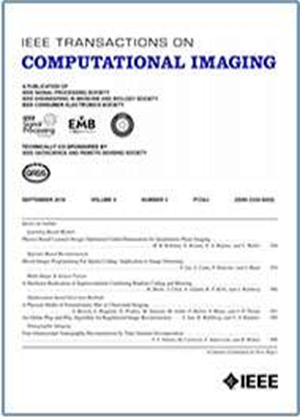GroupCDL: Interpretable Denoising and Compressed Sensing MRI via Learned Group-Sparsity and Circulant Attention
IF 4.8
2区 计算机科学
Q2 ENGINEERING, ELECTRICAL & ELECTRONIC
引用次数: 0
Abstract
Nonlocal self-similarity within images has become an increasingly popular prior in deep-learning models. Despite their successful image restoration performance, such models remain largely uninterpretable due to their black-box construction. Our previous studies have shown that interpretable construction of a fully convolutional denoiser (CDLNet), with performance on par with state-of-the-art black-box counterparts, is achievable by unrolling a convolutional dictionary learning algorithm. In this manuscript, we seek an interpretable construction of a convolutional network with a nonlocal self-similarity prior that performs on par with black-box nonlocal models. We show that such an architecture can be effectively achieved by upgrading the基于学习群稀疏性和循环注意的可解释去噪和压缩感知MRI
图像中的非局部自相似性在深度学习模型中越来越受欢迎。尽管这些模型具有成功的图像恢复性能,但由于其黑箱结构,这些模型在很大程度上仍然是不可解释的。我们之前的研究表明,通过展开卷积字典学习算法,可以实现可解释的全卷积去噪器(CDLNet)结构,其性能与最先进的黑箱去噪器相当。在本文中,我们寻求具有非局部自相似先验的卷积网络的可解释结构,其性能与黑箱非局部模型相当。我们表明,通过将CDLNet的$\ell _{1}$稀疏性先验(软阈值)升级为图像自适应的组稀疏性先验(组阈值),可以有效地实现这种体系结构。该方法利用非局部注意对潜在表征进行空间变化的软阈值处理。为了能够对具有全局伪影的大型图像进行有效的训练和推理,我们提出了一种新的循环稀疏关注。与黑盒非局部深度神经网络和变压器相比,我们实现了具有竞争力的自然图像去噪性能。我们网络的可解释结构允许直接扩展到压缩感知MRI (CS-MRI),从而产生最先进的性能。最后,我们展示了训练和推理之间的噪声级不匹配的鲁棒性,用于去噪和CS-MRI重建。
本文章由计算机程序翻译,如有差异,请以英文原文为准。
求助全文
约1分钟内获得全文
求助全文
来源期刊

IEEE Transactions on Computational Imaging
Mathematics-Computational Mathematics
CiteScore
8.20
自引率
7.40%
发文量
59
期刊介绍:
The IEEE Transactions on Computational Imaging will publish articles where computation plays an integral role in the image formation process. Papers will cover all areas of computational imaging ranging from fundamental theoretical methods to the latest innovative computational imaging system designs. Topics of interest will include advanced algorithms and mathematical techniques, model-based data inversion, methods for image and signal recovery from sparse and incomplete data, techniques for non-traditional sensing of image data, methods for dynamic information acquisition and extraction from imaging sensors, software and hardware for efficient computation in imaging systems, and highly novel imaging system design.
 求助内容:
求助内容: 应助结果提醒方式:
应助结果提醒方式:


